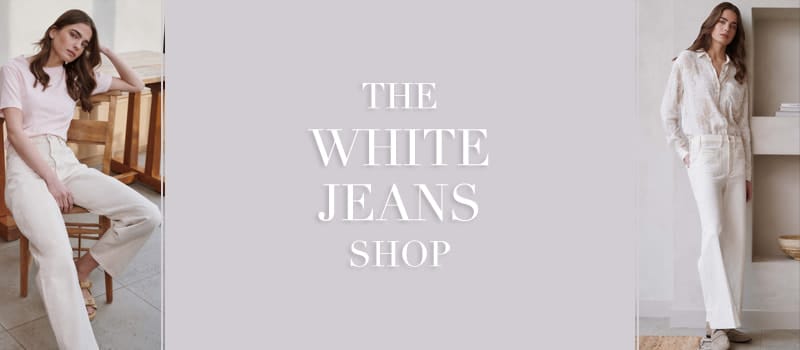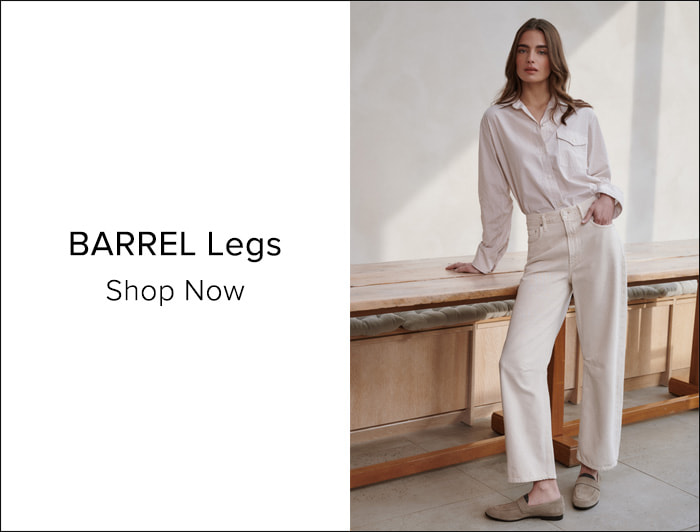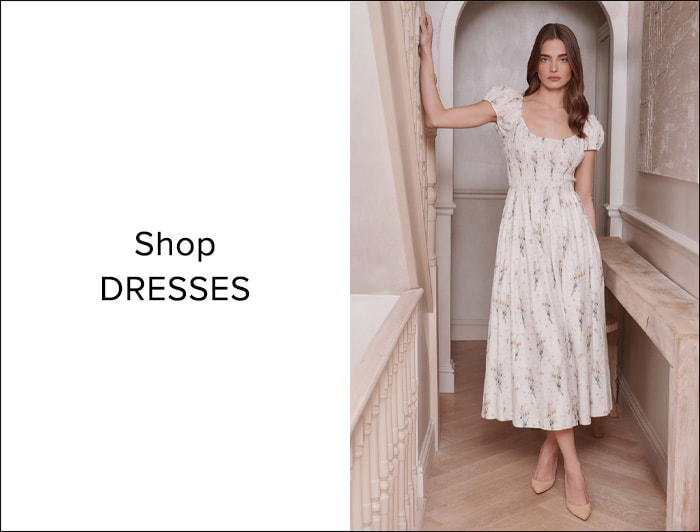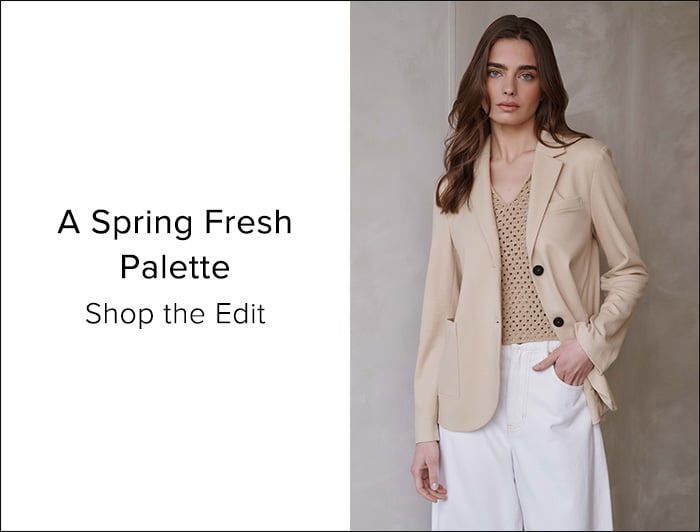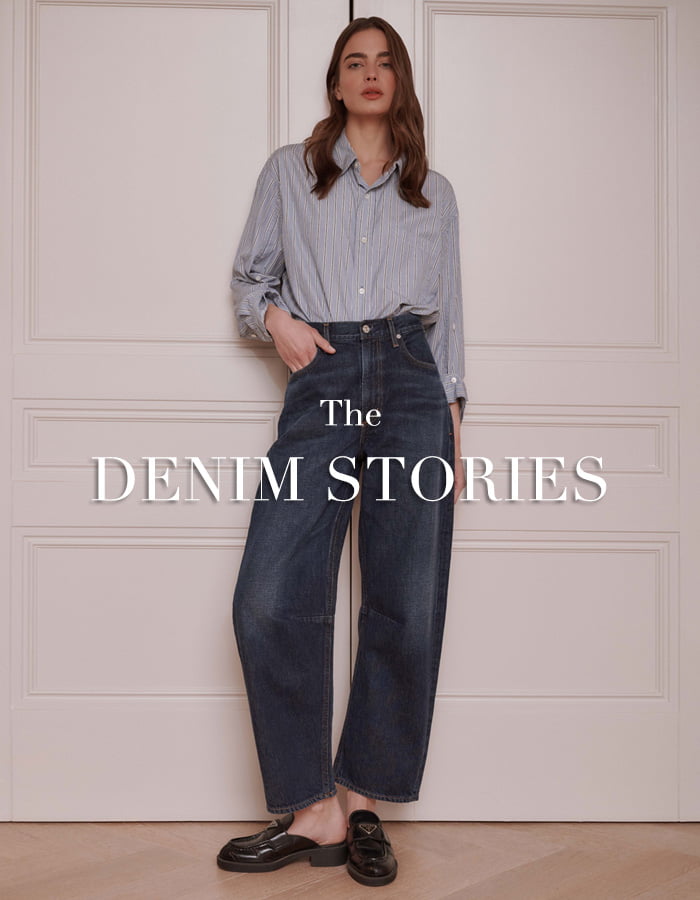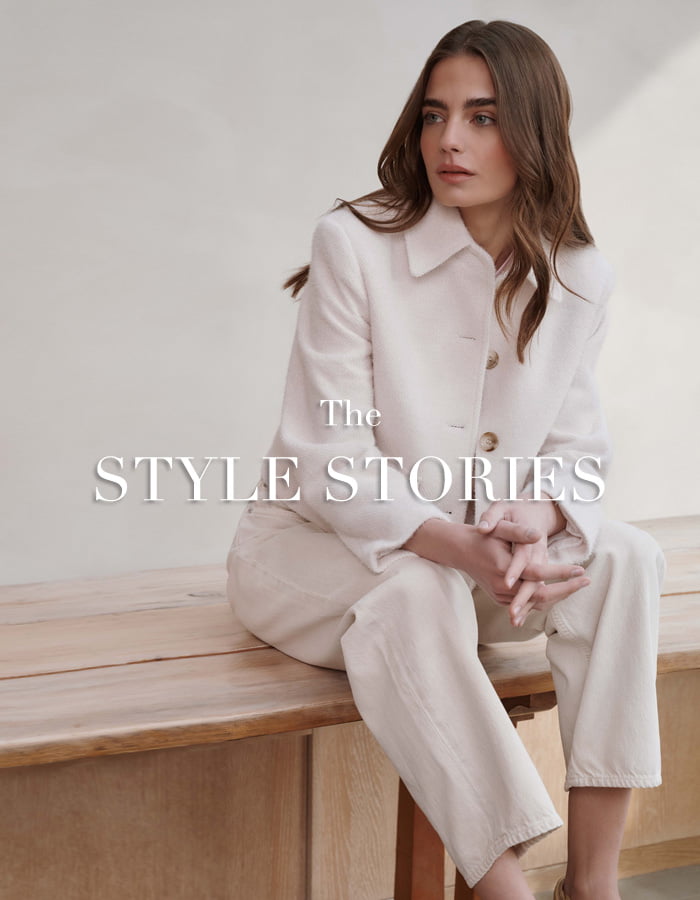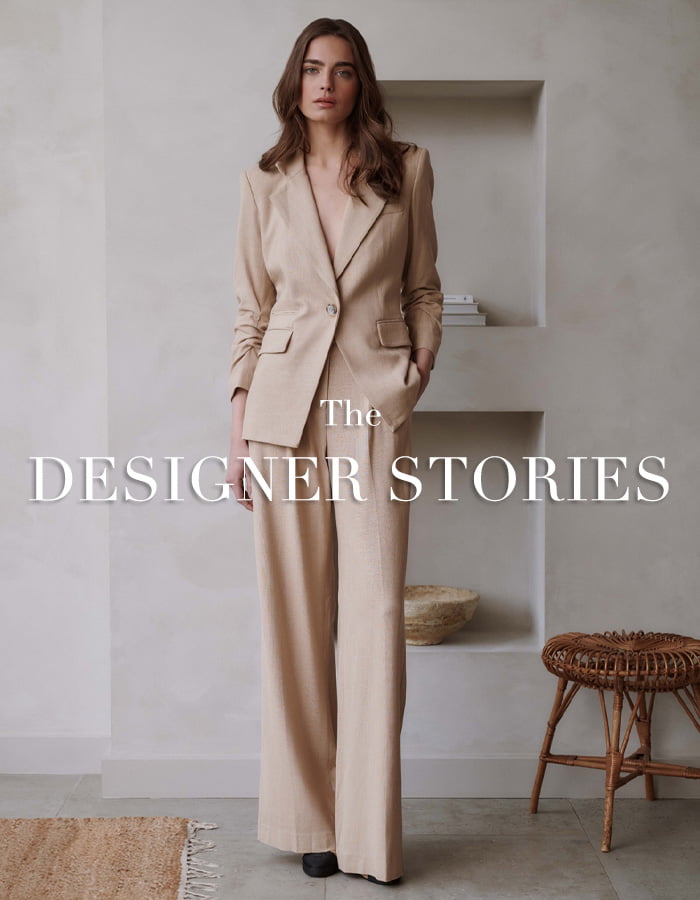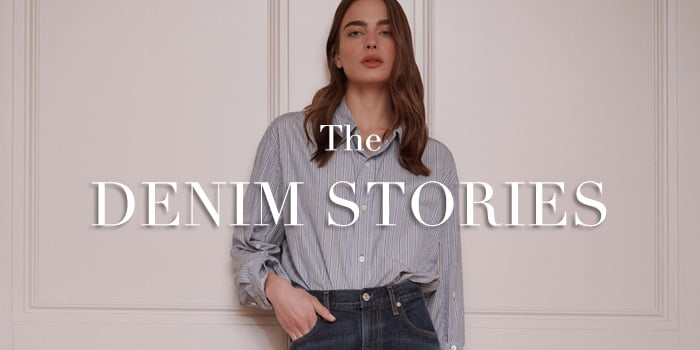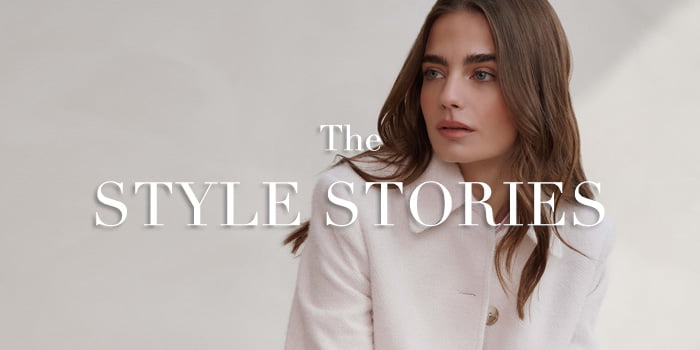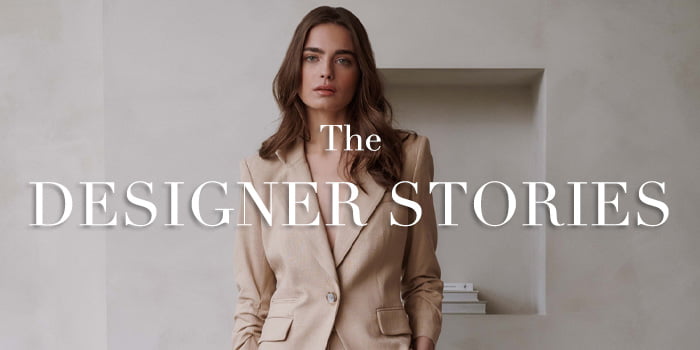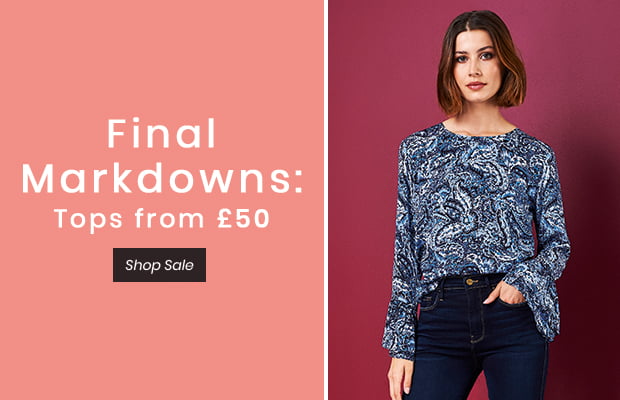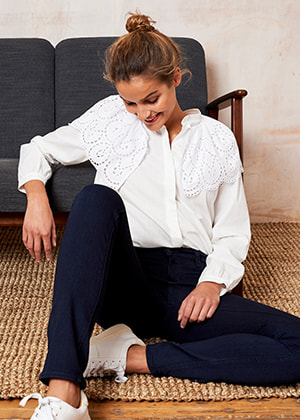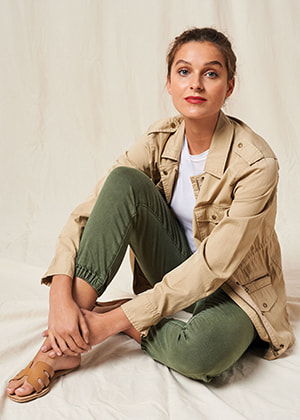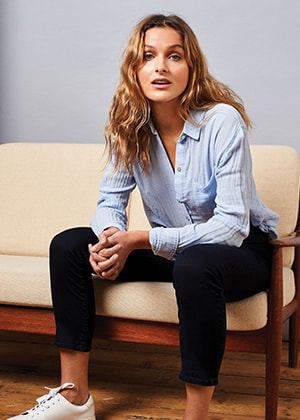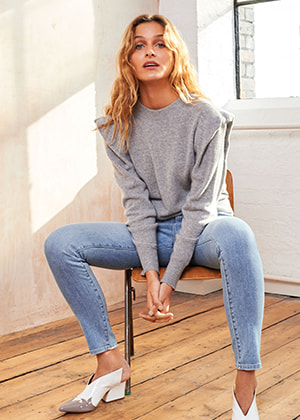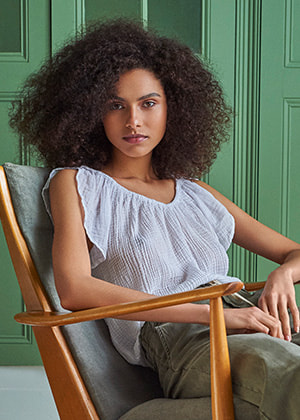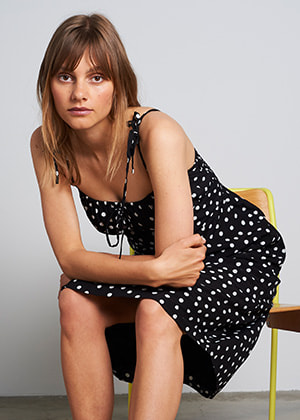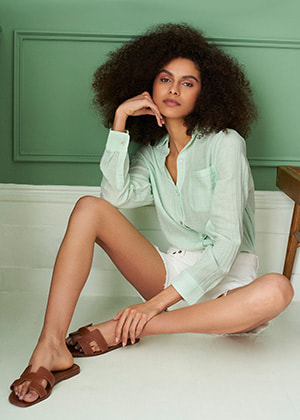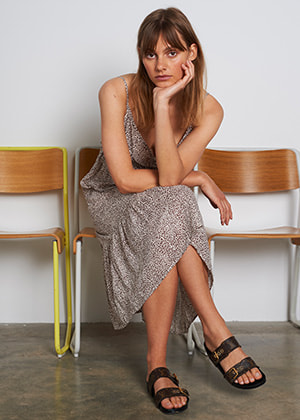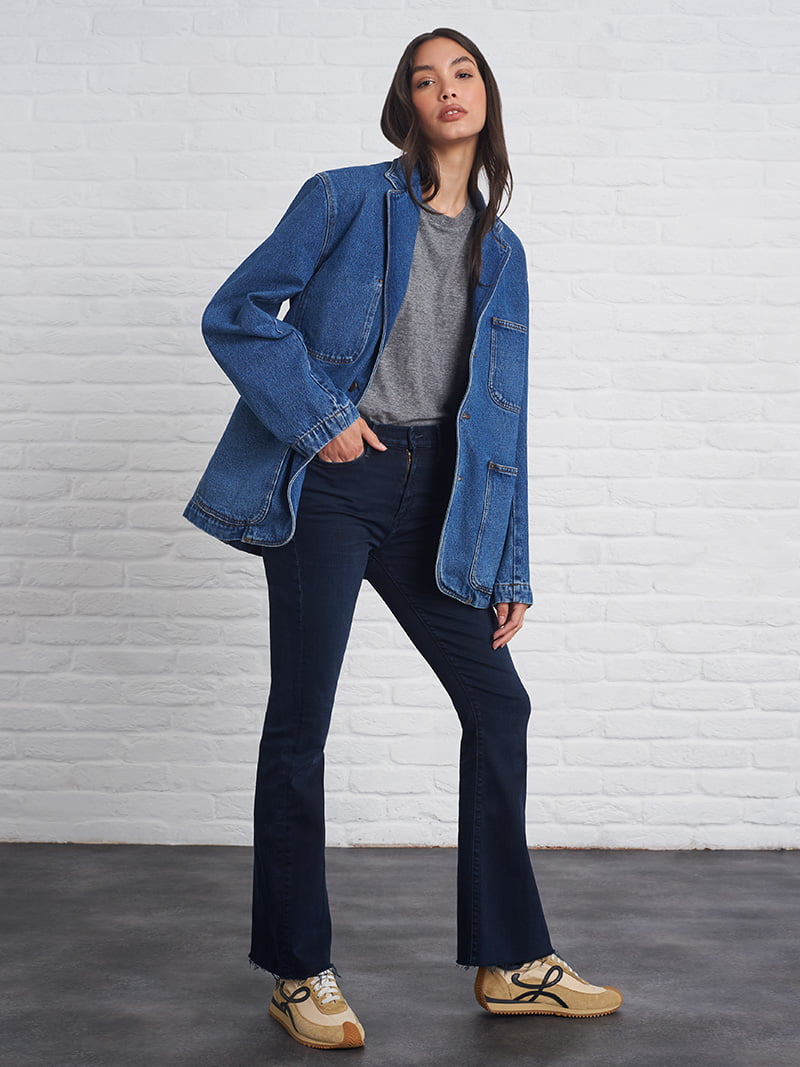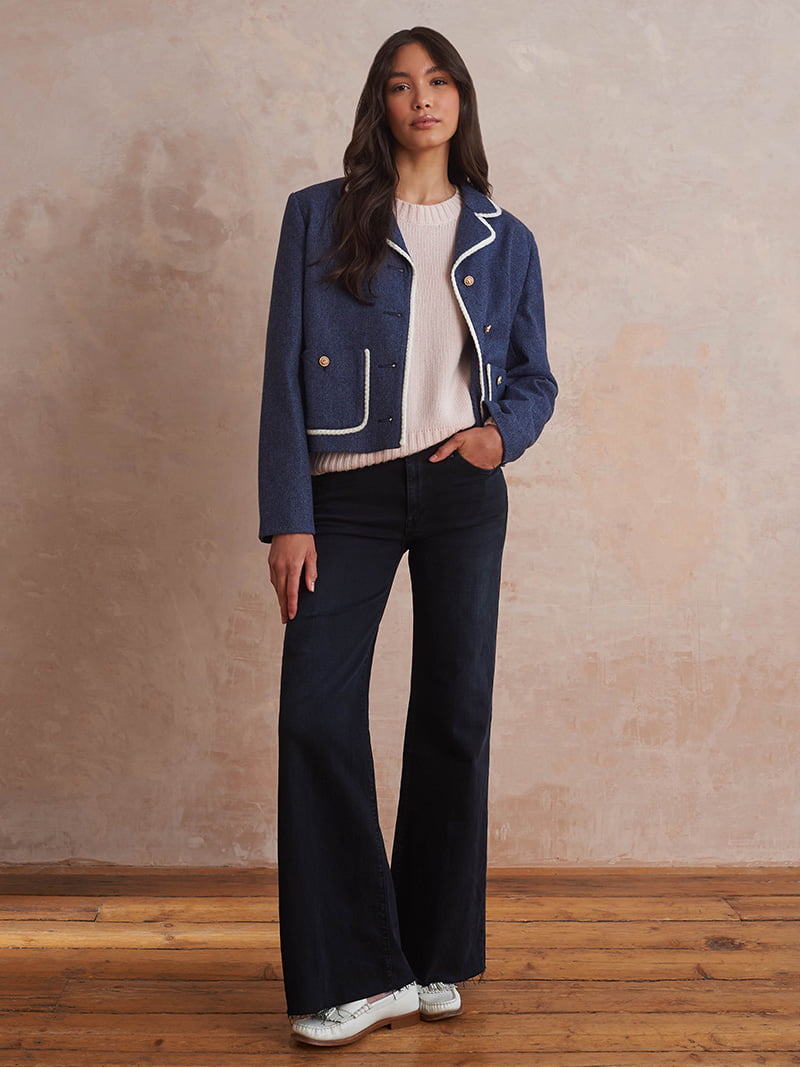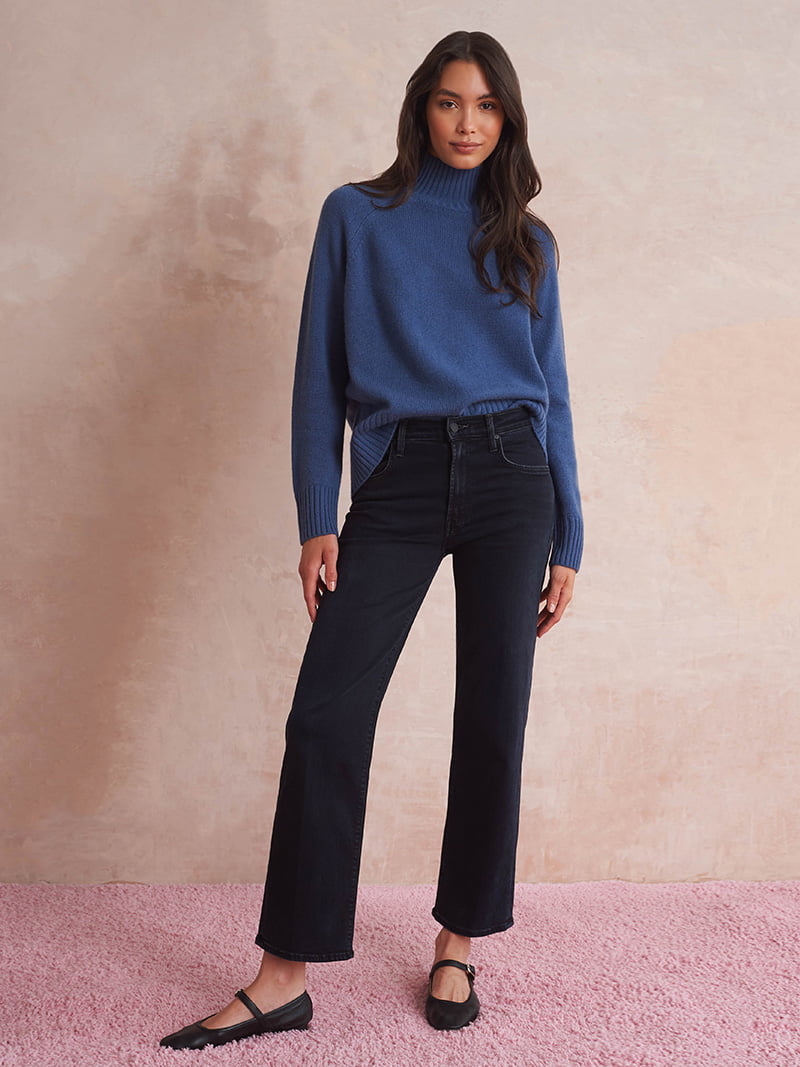Denim Terminology, Explained
Explore our glossary of definitions with our denim terminology. Discover everything you need to know about denim from the experts at Trilogy.
Denim terminology, explained: Everything you need to know
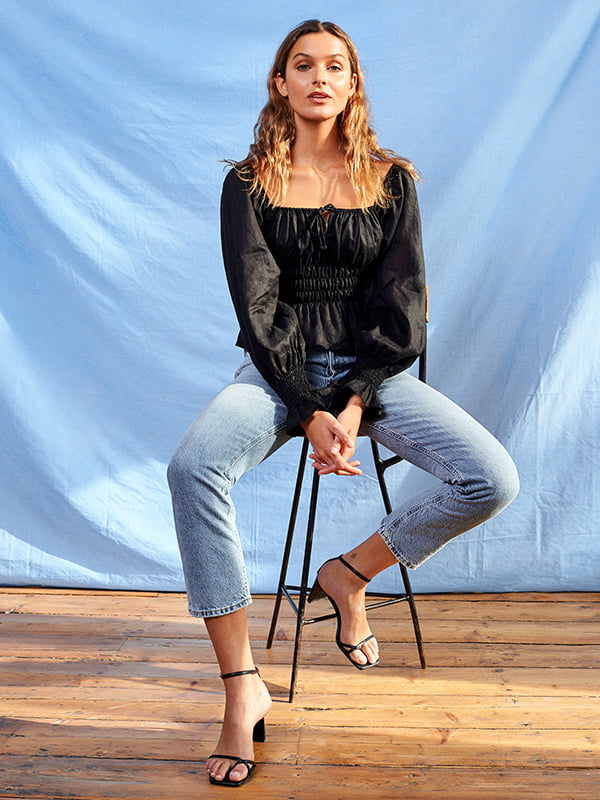
At Trilogy, we pride ourselves on helping you find the perfect pair of women’s designer jeans. We work hard to ensure that every pair of jeans has been made with love and care. We always aim for outstanding quality, longevity and style, with jeans made for all day comfort and a timeless, classy look.
Learn more about the features of every pair of jeans at Trilogy in our glossary.
Denim fits
The jean fit considers the overall shape of the jeans and how they fit when you are wearing them. There are a number of different jean fits to choose from, each bringing a sense of individuality to your look.
The most popular fits of denim jeans are:
Straight leg jeans
Skinny jeans
Bootcut jeans
Mom jeans
Cargo & Casual Trousers
Relaxed fit jeans
Cigarette jeans
Flared jeans
Cropped jeans
Boyfriend jeans
Leather & Coated jeans
Wide leg jeans
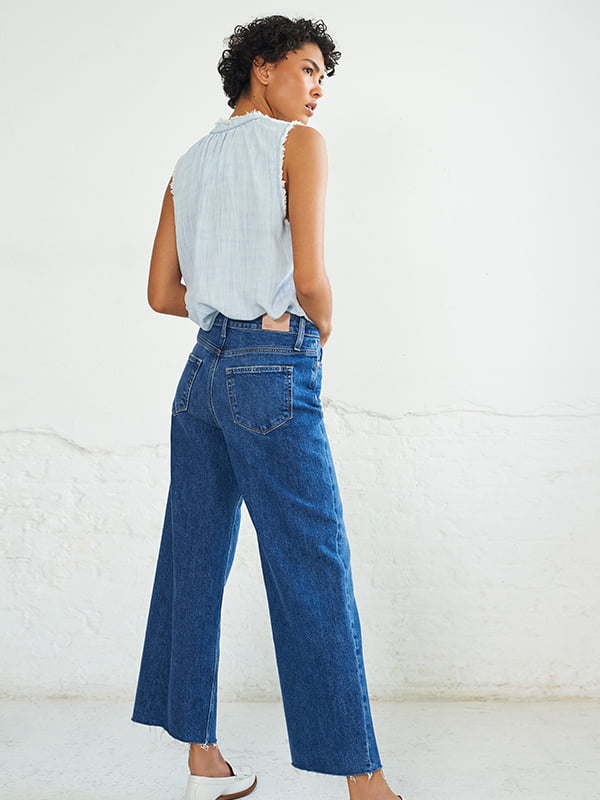
Finding Your Fit With Trilogy
Whether you are looking for a fitted look or a more relaxed style for everyday wear, our collection of designer denim brands at Trilogy includes everything you need to find the right fit for you. We put you first and help you find your perfect pair of jeans in a denim fit that tailors to your exact style.
DENIM FADES
Denim fades refer to the fade of the denim and the strength of the indigo colour. Indigo is the dye that gives the denim material its blue colour. Faded or lightened denim jeans can bring extra originality to your look, and tend to emulate the form, functionality and long-lasting wear of a more traditional denim.
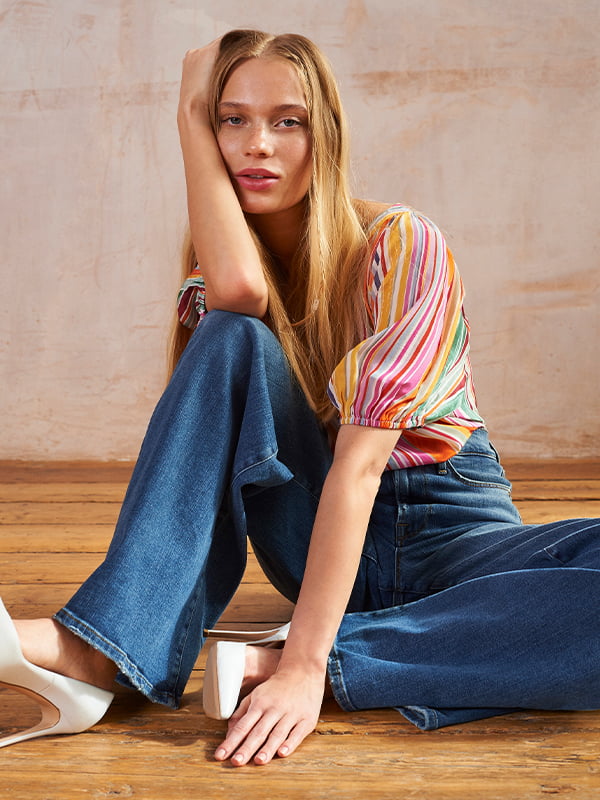
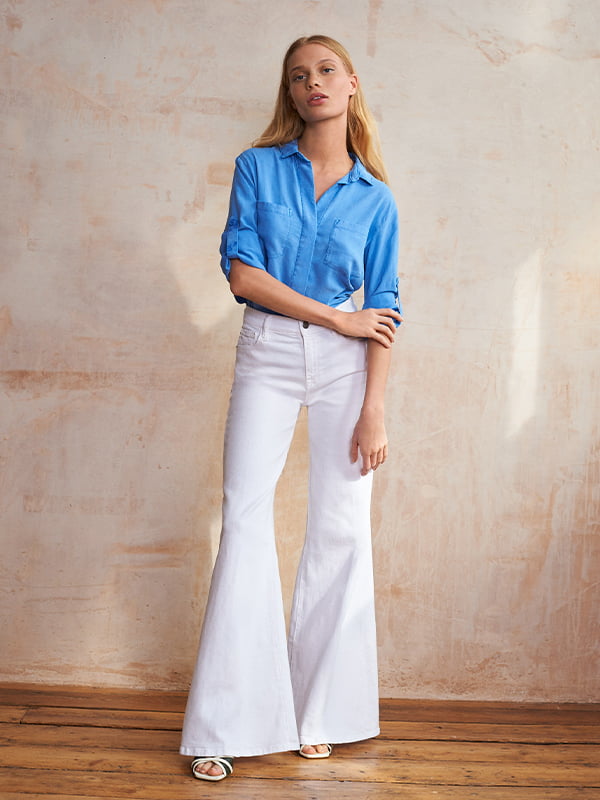
RISE
Rise refers to where a pair of denim jeans will sit on the wearer. High-rise denim jeans rest on the natural waistline, which is close to the navel. Low-rise jeans will rest on the hip bones, and mid-rise jeans will sit between the navel and the hips.
For a more sophisticated, timeless look, high-rise fitted denim jeans may be more appropriate. Low-rise jean styles such as boyfriend jeans offer a more relaxed, casual look.
Stretch Denim
Stretch denim refers to denim material that has an extra element of stretch for comfort and a little more ‘give’. The stretchiness within the material is added by including a small amount of elastane into the weave.
Non-Stretch Denim
Non-stretch denimrefers to pairs of jeans made of 100% cotton yarn. Traditionally, non-stretch denim jeans offer a more tailored and structured look. Non-stretch jeans may need fewer washes than stretch denim jeans. We will often refer to non-stretch denim as ‘rigid’.
An Inseam
An in seam is the stitching that runs along the inner leg of a pair of jeans. The inseam measurement is the best way to determine if a pair of jeans are the right length for you.
An Outseam
An outseam is the external stitching on a pair of jeans. Outseams run vertically down the outside of the garment leg.
Raw denim
Raw denim is the name given to untreated denim. Most of the jean styles you find in-store today will have been treated, as this softens the denim considerably to add comfort and durability. Generally speaking, raw denim garments are ‘broken in’ or treated before they are worn. Not to be confused with a ‘raw hem’ which refers to a stylistic finish where the hem has been cut but not stitched.
Taper
Tapered jeans will narrow as the fabric goes further down the leg. This narrow ‘tapered’ style can add more shape and style, and work to accentuate the shape of the leg.
Top Stitch
Top stich can refer to decorative or functional stitching added to the top of a garment or the side. Top stitching is often used to add character and finesse to a pair of denim jeans. Topstitch patterns bring a touch of individuality to the denim design. They typically feature on either the back pockets or outer leg seams.
Warp & Weft
Warp and weft are two different types of weaving that are used to achieve the distinctive contrast design of the inner and outer fabric of a pair of jeans.
The Rivet
The rivet in a pair of jeans is the piece of metal hardware classically associated with denim, helping to reinforce the garment and give your jeans more structure.
Chain Stitch
Chain stitch is a stitching method frequently used when creating a pair of jeans. Offering a stretch finish with a continuous piece of thread, chain stitching is often used to add comfort to garments. You will often find chain stitching around the waistband or leg seam on a pair of denim jeans, as opposed to a lockstitch.
The Bartack
The bartack is a type of stitch used on a pair of jeans that adds both strength and durability. Bartacks reinforce the stitching on both the loops and the pocket colours and are deliberately designed to allow the wearer more flexibility for everyday wear.
Twill
The twill is the name given to a specific weave that created the denim fabric of every pair of jeans we sell at Trilogy. Twill creates a diagonal pattern or alternating diagonal pattern on the fabric surface; the consistent diagonal pattern defines fabric as the denim that we know and love today.
The Yoke
The yoke is a section of the jeans that sits directly below the waistband and can be a defining factor in finding the perfect pair of jeans. The yoke differs in design and shape depending on the fit of your denim jeans. The depth of the yoke on a pair of women’s jeans will work to enhance their fit for a flattering look, so it is worth consulting with denim experts to discover the best design for you that puts comfort first.
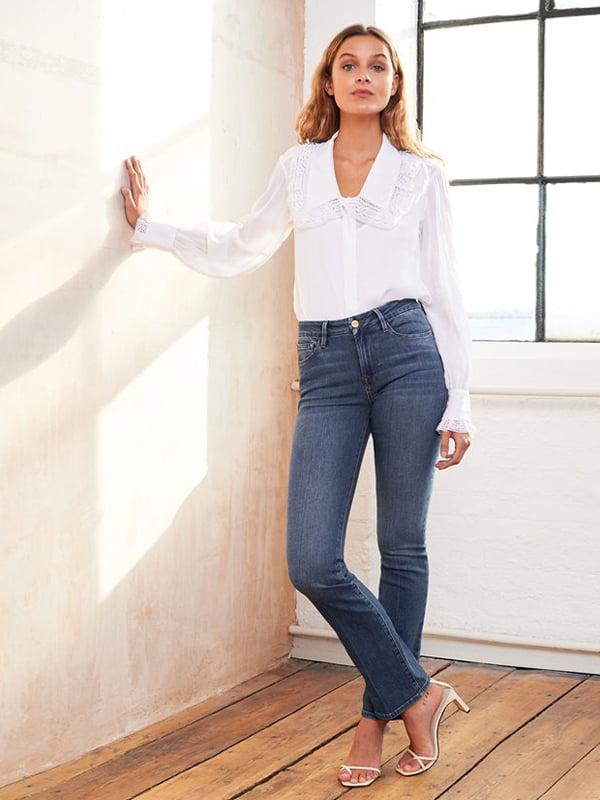
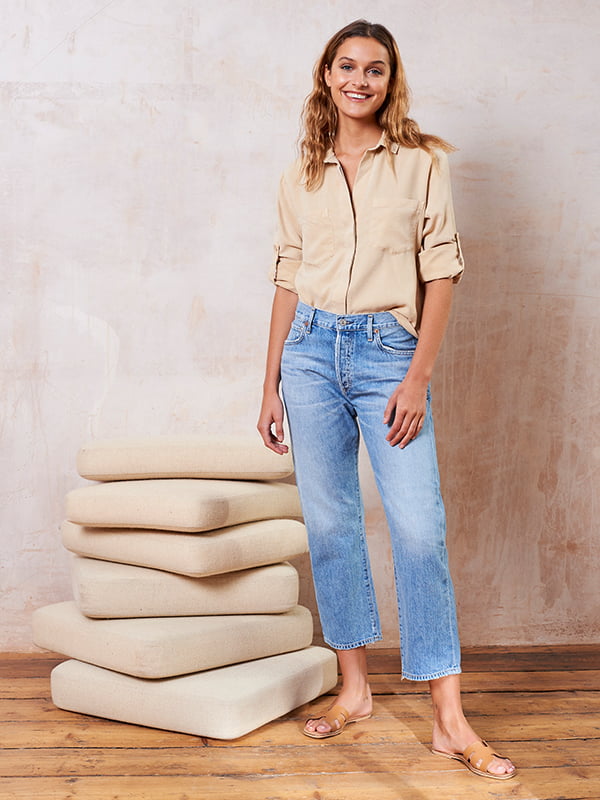
Slub
Slub describes denim fabric with a yarn that differs in thickness. This means there is no uniform texture to the jeans. Nowadays, slubbing is a style choice and an aesthetic enhancement, and jeans featuring a slub design may feature faded sections in the clothing. This technique once stemmed from irregularities in the denim weave, which changed over time when the distressed, vintage look became popular.
Whiskers
Whiskers to the creases that you can often see on the upper thigh of a pair of jeans. Often a pre-fabricated feature of jeans, whiskers can give your denim a ‘worn-in’ look and feel and are hand-sanded onto the denim fabric. For those looking for a contrasting, distressed look, denim jeans that feature whiskers may just be the way to go.

